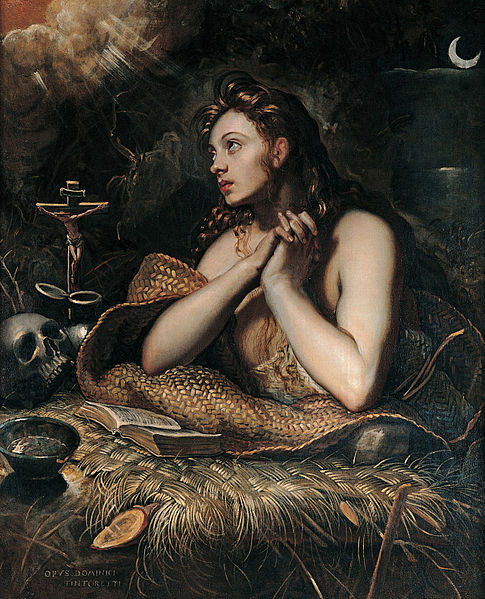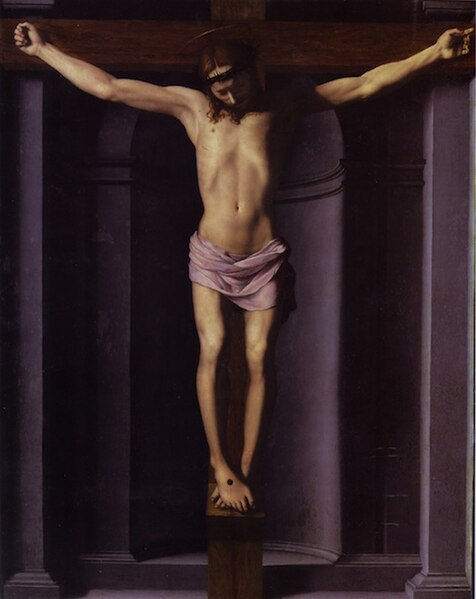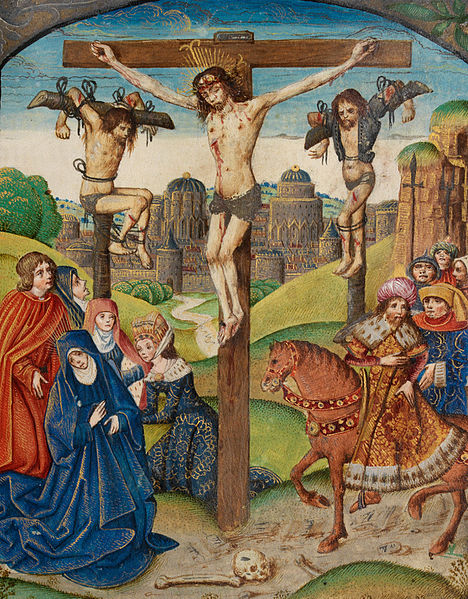Mary Magdalene was a woman who, according to the four canonical gospels, traveled with Jesus as one of his followers and was a witness to his crucifixion and resurrection. She is mentioned by name twelve times in the canonical gospels, more than most of the apostles and more than any other woman in the gospels, other than Jesus's family. Mary's epithet Magdalene may be a toponymic surname, meaning that she came from the town of Magdala, a fishing town on the western shore of the Sea of Galilee in Roman Judea.
Mary Magdalene (c. 1598) by Domenico Tintoretto, depicting her as a penitent
Photograph taken c. 1900 of al-Majdal, a village standing among the ruins of Magdala, Mary Magdalene's hometown
The Conversion of Mary Magdalene (c. 1548) by Paolo Veronese
Detail of Mary Magdalene weeping at the crucifixion of Jesus, as portrayed in The Descent from the Cross (c. 1435) by the Flemish artist Rogier van der Weyden
The crucifixion of Jesus was the execution by crucifixion of Jesus of Nazareth in 1st-century Judaea, most likely in AD 30 or AD 33. It is described in the four canonical gospels, referred to in the New Testament epistles, attested to by other ancient sources, and is broadly accepted as one of the events most likely to have occurred during his life. There is no consensus among historians on the details.
Christ Crucified (c. 1632) by Diego Velázquez
A depiction of the Raising of the Cross, by Sebastiano Mazzoni, 17th century, Ca' Rezzonico
Bronzino's depiction of the crucifixion with three nails, no ropes, and a hypopodium standing support, c. 1545
Christ on the Cross between two thieves. Illumination from the Vaux Passional, 16th century








